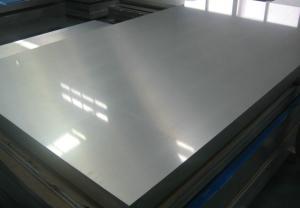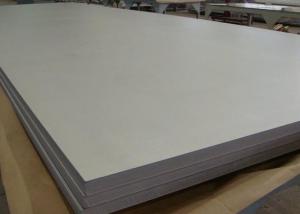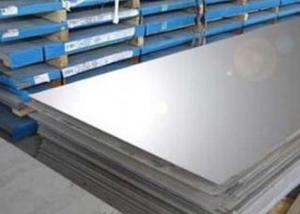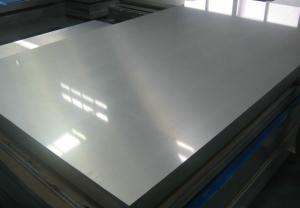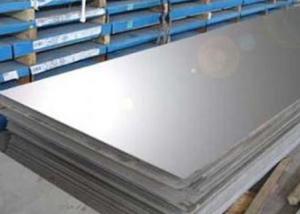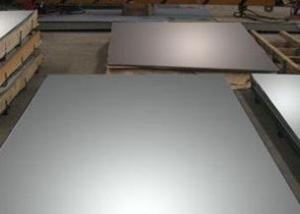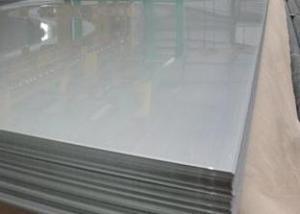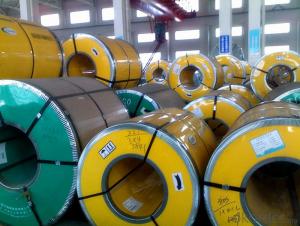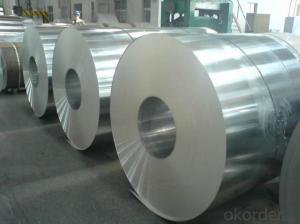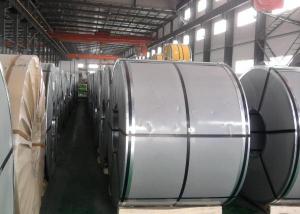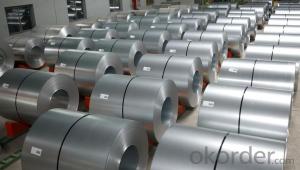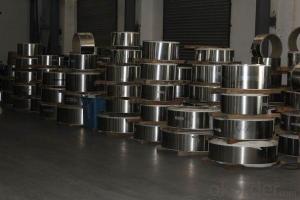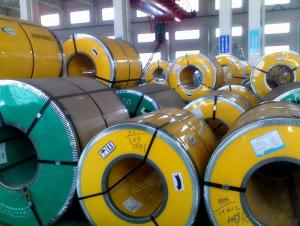304 2B Stainless Steel Sheet
- Loading Port:
- China Main Port
- Payment Terms:
- TT or LC
- Min Order Qty:
- 1 Ton m.t.
- Supply Capability:
- 5000 Tons Per Month m.t./month
OKorder Service Pledge
OKorder Financial Service
You Might Also Like
AISI 304 Stainless steel sheet
1. Chemical composition of AISI 304 Stainless steel sheet
C | Si | Mn | P | S | Ni | Cr |
max0.08 | max1.00 | max2.00 | max0.045 | max0.03 | 8.00-10.50 | 18.00-20.00 |
2. Mechanical properties of AISI 304 Stainless steel sheet
Yield Strength | Tensile | Elongation | Hardness (HV) | Hardness (HRB) |
≥ 205 | ≥ 520 | ≥ 40 | ≤ 200 | ≤ 90 |
3. Standard of AISI 304 Stainless steel sheet : AISI, ASTM, GB, EN, DIN, JIS
4. Surface of AISI 304 Stainless steel sheet : 2B, NO.1, BA, NO.4, Hairline, SB, Mirror finish, Anti-skid, Cherkered etc.
5. Size of AISI 304 Stainless steel sheet :
Thickness: 0.3-3mm (cold rolled), 3-40mm (hot rolled)
Width: 1000mm or 1219mm or 1240mm for cold rolled, 1500mm for hot rolled.
Length: As customers' request.
6. MOQ of AISI 304 Stainless steel sheet : 1 Ton
7. Payment terms of AISI 304 Stainless steel sheet : T/T or L/C
8. Packing of AISI 304 Stainless steel sheet : Seaworthy package with wooden or Iron pallets with the paper and the steel strip,
or as customers' request.
9. Delivery time of AISI 304 Stainless steel sheet : Usually about 7 days after we confirming the order, or according to your quantity.
If you have any demand, pls feel free to contact me.
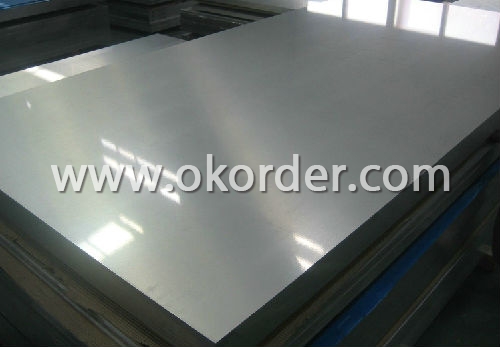
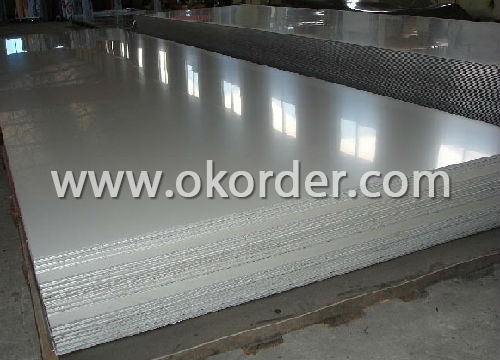
- Q: Can stainless steel strips be used in electrical enclosures?
- Yes, stainless steel strips can be used in electrical enclosures. Stainless steel is a popular choice for electrical enclosures due to its corrosion resistance, durability, and ability to withstand harsh environments. Stainless steel strips can be used to reinforce the structure of the enclosure or to provide grounding. Additionally, stainless steel has good electrical conductivity, which makes it suitable for use in electrical applications. It is important to choose the appropriate grade of stainless steel based on the specific requirements of the enclosure to ensure optimal performance and longevity.
- Q: What is the thermal expansion coefficient of stainless steel strips?
- The thermal expansion coefficient of stainless steel strips can vary depending on the specific grade used. Compared to other materials, stainless steel generally has a low coefficient of thermal expansion. This coefficient measures the extent of expansion or contraction a material undergoes with temperature changes. Typically, stainless steel exhibits a thermal expansion coefficient ranging from approximately 10 to 17 µm/m°C (micrometers per meter per degree Celsius). This implies that with each degree Celsius rise in temperature, a stainless steel strip will lengthen by around 10 to 17 micrometers per meter. It is worth noting that the exact coefficient of thermal expansion may differ based on the specific alloy composition and heat treatment applied to the stainless steel. Therefore, it is advisable to refer to the manufacturer's specifications or carry out specific testing to ascertain the precise thermal expansion coefficient of a particular stainless steel strip.
- Q: Are stainless steel strips suitable for automotive fuel systems?
- Yes, stainless steel strips are suitable for automotive fuel systems. Stainless steel is known for its high corrosion resistance, making it an ideal choice for fuel systems in vehicles. It can withstand exposure to gasoline and other fuel types without corroding or degrading over time. Additionally, stainless steel's strength and durability ensure that it can withstand the high pressures and temperatures associated with automotive fuel systems. This material also has excellent heat resistance properties, which is crucial in preventing fuel leaks and maintaining the safety of the system. Furthermore, stainless steel strips can be easily formed and fabricated into various shapes and sizes, allowing for flexible design options in fuel system components. Overall, stainless steel strips offer the necessary qualities required for automotive fuel systems, making them a suitable choice for this application.
- Q: Can stainless steel strips be used for precision instruments?
- Yes, stainless steel strips can be used for precision instruments. Stainless steel is known for its excellent corrosion resistance, durability, and high strength, making it suitable for a wide range of applications, including precision instruments. Stainless steel strips can be manufactured to precise dimensions, ensuring accuracy and consistency in the instruments' construction. Additionally, stainless steel strips offer good thermal conductivity and can withstand extreme temperatures, which is crucial for precision instruments that may be exposed to varying environmental conditions. Moreover, stainless steel is non-magnetic, making it ideal for instruments that require non-magnetic properties. Overall, stainless steel strips provide the necessary qualities required for precision instruments, making them a suitable choice in various industries such as medical, aerospace, and scientific research.
- Q: How do you store stainless steel strips?
- To store stainless steel strips properly, it is important to take certain precautions to prevent damage and maintain their quality. Here are some recommended steps to follow: 1. Clean and dry: Before storing stainless steel strips, make sure they are thoroughly cleaned and dried to remove any dirt, dust, or moisture. This will prevent corrosion or staining during storage. 2. Protect from moisture: Stainless steel is susceptible to rust, so it is crucial to keep the strips away from moisture. Store them in a dry and well-ventilated area, away from any water sources or high humidity environments. 3. Avoid contact with other metals: To prevent potential galvanic corrosion, avoid storing stainless steel strips in direct contact with other metals, especially those that are less noble or prone to corrosion. If stacking the strips, consider using separators or protective layers made of plastic or non-reactive materials to prevent direct metal-to-metal contact. 4. Use proper packaging: To provide additional protection, consider packaging the stainless steel strips in appropriate materials such as plastic wrap, paper, or specially designed corrosion-resistant packaging. This will help prevent scratches, corrosion, or other damage during storage or transportation. 5. Organize and label: Properly organize and label the stainless steel strips to easily identify and retrieve them when needed. This will help prevent unnecessary handling and potential damage caused by searching or mishandling. 6. Temperature control: While not always feasible, maintaining a controlled temperature can help prolong the lifespan of stainless steel strips. Extreme temperature variations can cause expansion and contraction, leading to stress and potential deformation. If possible, store the strips in a temperature-controlled environment. By following these guidelines, you can ensure that your stainless steel strips remain in excellent condition and ready for use whenever needed.
- Q: What are the factors affecting the abrasion resistance of 111 stainless steel strips?
- The abrasion resistance of 111 stainless steel strips can be influenced by several factors. To begin with, the composition of the stainless steel itself plays a crucial role. The percentage of key elements like chromium, nickel, and molybdenum can impact the steel's hardness and toughness, thus affecting its resistance to abrasion. Generally, higher levels of these elements result in increased abrasion resistance. Additionally, the microstructure of the stainless steel is important. Factors such as the presence of grain boundaries, phase transformations, and precipitates can influence the steel's ability to withstand abrasion. It is generally preferred to have a fine-grained microstructure for improved abrasion resistance. The surface finish and treatment of the stainless steel strips also have a significant impact. Processes like polishing and passivation can enhance the smoothness of the surface, reducing the likelihood of abrasion. Moreover, applying protective coatings such as ceramic or diamond-like carbon can provide an extra layer of defense against abrasion. The mechanical properties of the stainless steel, including hardness and tensile strength, also affect its resistance to abrasion. Harder materials tend to be more resistant to abrasion as they can withstand the forces and friction involved. Similarly, higher tensile strength helps the material withstand deformation and wear. External factors, such as the type and intensity of the abrasive material, the speed and pressure of the abrasion, and the temperature and humidity conditions, can also impact the abrasion resistance of stainless steel strips. Different abrasive materials have varying levels of hardness and sharpness, which can affect the wear rate. Higher speeds and pressures can increase the severity of abrasion, while elevated temperatures and humidity levels can promote corrosion and wear. In conclusion, the abrasion resistance of 111 stainless steel strips is influenced by a combination of factors, including material composition, microstructure, surface treatment, mechanical properties, and external conditions. Understanding and optimizing these factors can assist manufacturers and users in selecting and utilizing stainless steel strips that are most suitable for their intended applications.
- Q: Can stainless steel strips be used in the oil refining industry?
- Indeed, the oil refining industry can utilize stainless steel strips. With its exceptional resistance to corrosion, stainless steel emerges as the perfect material for managing and containing diverse chemicals and substances involved in the oil refining procedure. Moreover, stainless steel exhibits remarkable temperature resistance, a vital characteristic in an industry that frequently confronts high temperatures. Equipment like heat exchangers, distillation columns, and storage tanks commonly employ stainless steel strips, benefiting from their robustness, durability, and resistance to corrosion. Ultimately, stainless steel strips represent a dependable and economical option for the oil refining industry.
- Q: Are 111 stainless steel strips suitable for power generation equipment?
- Yes, 111 stainless steel strips can be suitable for power generation equipment. 111 stainless steel is a ferritic stainless steel that contains 11% chromium, which provides good resistance to corrosion and oxidation at high temperatures. This makes it suitable for use in power generation equipment, which often operates at elevated temperatures and is exposed to corrosive environments. Additionally, 111 stainless steel has good mechanical properties, such as high strength and hardness, which are important for withstanding the stresses and strains in power generation equipment. However, the suitability of 111 stainless steel strips for power generation equipment ultimately depends on the specific requirements and conditions of the equipment, so it is important to consult with experts or engineers to ensure the best choice of material.
- Q: What is the typical thickness range of stainless steel strips?
- The typical thickness range of stainless steel strips can vary depending on the specific application and industry requirements. However, in general, stainless steel strips are available in thicknesses ranging from 0.1mm to 3mm. Thinner strips, such as those with a thickness below 0.5mm, are commonly used in industries like electronics, automotive, and medical devices. On the other hand, thicker strips, typically in the range of 1mm to 3mm, are utilized in heavy-duty applications like construction, oil and gas, and industrial machinery. It is important to note that these thickness ranges are not exhaustive and can be customized based on individual project needs.
- Q: Can stainless steel strips be used in petrochemical applications?
- Yes, stainless steel strips can be used in petrochemical applications. Stainless steel is known for its excellent corrosion resistance, making it a suitable material for environments with high exposure to chemicals, including petrochemical plants. Stainless steel is capable of withstanding the corrosive effects of petrochemicals, ensuring the integrity and longevity of the equipment. Additionally, stainless steel's high strength and heat resistance properties further enhance its suitability for petrochemical applications. Therefore, stainless steel strips are commonly used in the construction of various petrochemical equipment, such as tanks, pipelines, heat exchangers, and reactors.
Send your message to us
304 2B Stainless Steel Sheet
- Loading Port:
- China Main Port
- Payment Terms:
- TT or LC
- Min Order Qty:
- 1 Ton m.t.
- Supply Capability:
- 5000 Tons Per Month m.t./month
OKorder Service Pledge
OKorder Financial Service
Similar products
Hot products
Hot Searches
Related keywords
